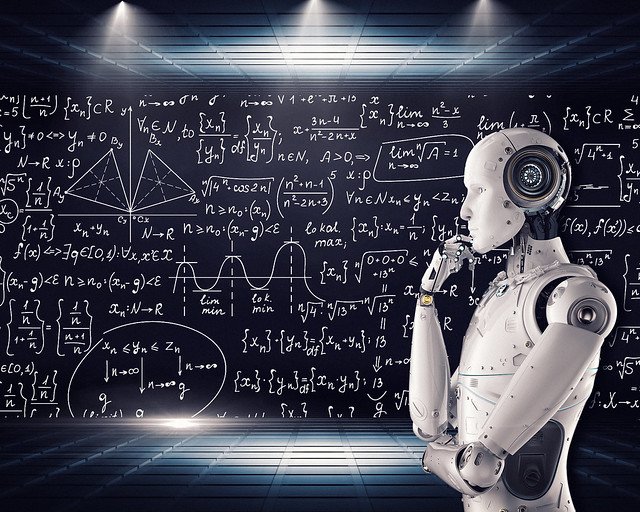
Introduction
Automation and robotics engineering have opened up new possibilities and have revolutionized the way we live and work. These fields have paved the way for a more efficient, cost-effective, and better-supported industry, and through this article, we will explore the many benefits and challenges it presents.
Definition of Automation and Robotics Engineering
Automation and robotics engineering is the process of designing, manufacturing, and maintaining automated systems that operate within a given industry. Automation refers to the use of machines and computers that can operate independently or with minimal human intervention, while robotics refers explicitly to the use of machines that can perform operations that require human-like dexterity.
Importance of Automation and Robotics Engineering in the Modern World
Automation and robotics engineering have evolved rapidly over the past few decades, leading to a multitude of benefits across various industries. In the modern world, the application of automation has revolutionized industrial operations, reduced human error, and increased productivity.
Brief History of Automation and Robotics Engineering

Automation and robotics engineering have been around for more than two centuries. The first automation systems were based on mechanical devices, but with advances in technology, automation and robotics have become more sophisticated and intelligent.
Types of Automation
Automation systems can be categorized into four types, namely fixed, programmable, flexible, and integrated automation. Each type offers specific benefits, such as increased flexibility, productivity, quality, and reliability.
Classification of Automation
Fixed automation uses machinery designed to perform a specific operation repeatedly, whereas programmable automation involves the use of machines that can be programmed to perform various functions. Flexible automation is designed to accommodate various product designs and volumes without the need for retooling. Integrated automation involves the incorporation of various automation systems and technologies to achieve a single goal efficiently.
Examples of Automated Systems
Assembly lines, CNC machines, and robotic arms are some of the most prevalent examples of automated systems used in various industries today.
Advantages of Using Automation
The use of automation offers numerous benefits, including increased productivity, efficiency, accuracy, safety, and cost-effectiveness.
Types of Robotics
Robots can be classified according to their configuration, movement, and application. They can be further categorized by their level of autonomy.
Classification of Robots
Industrial robots, service robots, and intelligent robots are three primary classifications of robots according to their application. Mobile robots, fixed robots, and anthropomorphic robots are types of robots that relate to their configuration.
Examples of Robotic Systems
Robotics technology is used extensively in various industries, including manufacturing, healthcare, space exploration, and defense. Examples of robotic systems include automated surgical systems, warehouse robots, Mars rovers, and drones for field mapping and crop monitoring.
Advantages of Using Robots
The use of robots offers several benefits, including increased efficiency, precision, quality, safety, and cost-effectiveness.
The Science behind Automation and Robotics Engineering
Automation and robotics engineering rely on various scientific principles like control systems and sensors.
Fundamentals of Control Systems
Control systems involve the use of algorithms to regulate the output of machines and provide feedback.
Types of Sensors
Sensors are essential components of control systems, and they are responsible for sensing temperature, pressure, vibration, and other physical parameters.
Actuators and Their Types
Actuators are essential components of control systems as they are responsible for converting electrical or pneumatic signals into mechanical vibrations or movements.
Control Algorithms
Control algorithms are mathematical software programs that guide the operation of machines or robots.
Applications of Automation and Robotics
Automation and robotics technology are applied in various industries, including healthcare, aerospace and defense, agriculture, and home automation.
Industrial Automation
The use of automation systems in the manufacturing industry leads to increased efficiency, cost savings, and reliable production processes.
Healthcare Automation
Healthcare automation technology has been implemented significantly in recent years, leading to increased efficiency, accuracy, and safety in patient care.
Home Automation
Home automation systems involve the use of various technologies to automate home functions, leading to increased comfort, convenience, and safety.
Agriculture Automation
The use of robotics and automation technology in agriculture increases productivity, reduces waste, and ensures high-quality crops.
Aerospace and Defense Automation
The use of robotics technology is prevalent in aerospace and defense applications, where it provides high precision, accuracy, and efficient operations.
Advancements in Automation and Robotics
The advancements in automation and robotics technology have led to the development of several new technologies like Artificial intelligence, machine learning, and IoT integration.
Artificial Intelligence and Machine Learning
Artificial intelligence and machine learning are set to revolutionize automation and robotics technology and will likely play a critical role in the future of these fields.
Internet of Things (IoT) Integration
The integration of IoT and robotics technology offers many new possibilities, including improved efficiency, accuracy, and reliability of automated systems.
Robotics in Space Exploration
Robotic systems have been critical to exploration efforts in outer space, from planetary rovers to space telescopes.
Nanorobotics and Microbots
Nanorobotics and microbots are developed to move and actuate in confined spaces, making them ideal for applications like surgical procedures or microscopic mechanical operations.
Careers in Automation and Robotics Engineering
Automation and robotics engineering is a highly skilled and specialized field, offering many job opportunities to qualified professionals.
Job Opportunities
Both the public and private sectors offer employment opportunities in automation and robotics engineering, from electrical and mechanical design engineers to software engineers.
Required Skills and Qualifications
A degree in mechanical, electrical, or computer engineering is essential, with additional experience in automation or robotics technology highly desirable.
Job Market Trends
Job prospects for automation and robotics engineers are expected to grow at a significantly faster rate than the average for all occupations.
Ethical and Social Implications of Automation and Robotics
The widespread adoption of automation and robotics technology presents many ethical and social challenges that must be addressed.
Impact on Employment
The rise of automated systems threatens to displace many jobs and will likely lead to significant unemployment in certain industries.
Safety Concerns
The use of automated systems presents many safety challenges, particularly in high-risk industries like healthcare and manufacturing.
Ethical Considerations
The development of automated systems raises ethical concerns surrounding the use of artificial intelligence, autonomy, and responsibility.
Challenges in Automation and Robotics Engineering
The development and implementation of automated systems and robotics present several challenges that must be overcome.
Development Costs
The initial costs of developing automated systems and robotics are high and require significant investment to create.
Integration with Existing Systems
The integration of new systems into existing production lines or frameworks can be tricky and often requires extensive modification.
Cyber-Attacks and Security Concerns
Automated systems and robotics are susceptible to hacking and cyber-attacks, leading to significant security risks.
Maintenance and Repair Costs
Automation and robotic systems require specialized maintenance and repair, leading to significant additional costs for businesses.
Future of Automation and Robotics Engineering
Automation and robotics engineering are rapidly evolving, and the future holds many new possibilities for these fields.
Trends in Technology Development
The development of automation and robotics technology will continue to push the boundaries of what’s possible, leading to more sophisticated systems and improved capabilities.
Predictions for the Future
The future of automation and robotics engineering will see more widespread adoption of such systems across a broader range of industries, likely leading to higher quality outputs and improved safety.
Potential Impact on Society
The implementation of automation and robotics technology is likely to have a significant impact on society, with increased automation leading to significant job losses.
Conclusion
Automation and robotics technology have opened the door to a new era of productivity and efficiency in various industries. While such systems present many challenges, they also present many opportunities for growth and advancements in technology.

